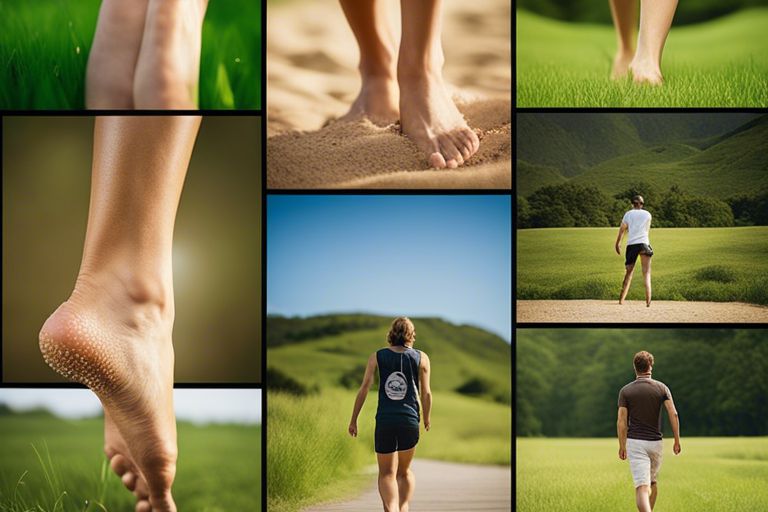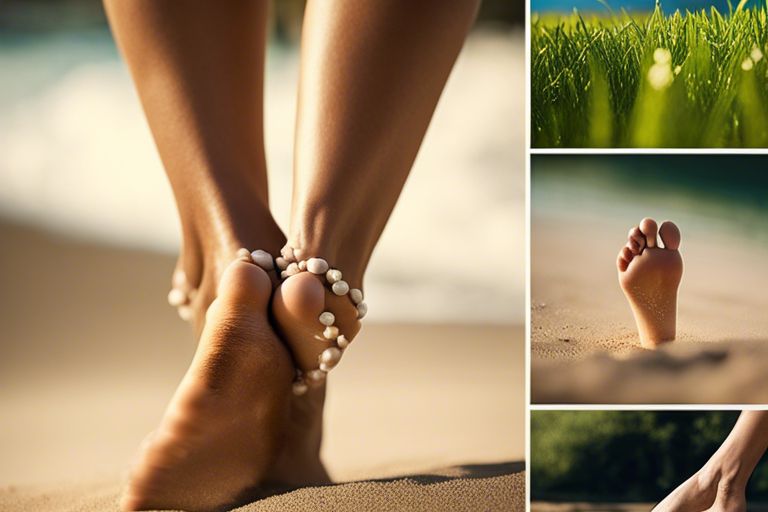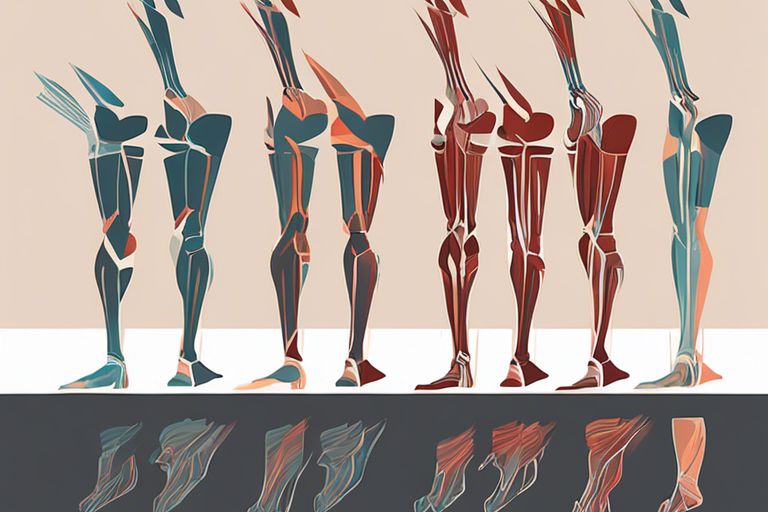Did you know that walking barefoot can have a significant impact on your body? When you ditch the shoes and let your feet make direct contact with the ground, it can lead to a range of physical changes that affect your overall well-being. From improved balance and posture to strengthening foot muscles that are often neglected in shoes, the benefits of walking barefoot are numerous. However, it’s important to be aware of the potential risks as well, such as the possibility of injury from stepping on sharp objects or rough surfaces. In this blog post, we’ll explore the positive and negative effects of walking barefoot, and provide you with the information you need to make an informed decision about incorporating barefoot walking into your routine.
Key Takeaways:
- Increased sensory input: Walking barefoot provides greater sensory input to the soles of the feet, which can help improve balance and coordination.
- Strengthening of foot muscles: Walking barefoot can help to strengthen the muscles in the feet and ankles, potentially reducing the risk of injury.
- Improved posture and gait: By allowing the natural movement of the foot, walking barefoot can help to improve posture and gait, leading to a more natural and efficient walking pattern.
Physiological Effects of Walking Barefoot
While walking barefoot can have a significant impact on your body, it is important to understand the physiological effects it can have. Here, we will explore how walking barefoot affects your body in different ways compared to wearing shoes.
Sensory Feedback and Balance
Walking barefoot allows for a greater sensory feedback from the soles of your feet. This increased input to the nervous system can improve your body’s awareness of weight distribution and ground contact, leading to better balance and stability. By engaging the numerous nerve endings in your feet, you can enhance proprioception, the ability to sense the position, location, orientation, and movement of your body and its parts. This can potentially reduce your risk of falls and injuries, particularly in older adults.
Muscle Strengthening and Posture
When you walk barefoot, the muscles in your feet and lower limbs are forced to work harder to provide support and propulsion. This can lead to stronger, more resilient muscles in your feet, ankles, and calves. Over time, this strengthening effect can improve your overall posture and reduce the risk of common foot conditions such as plantar fasciitis and Achilles tendinitis. Additionally, walking barefoot can also help to promote a more natural gait, reducing the risk of overpronation or supination, which can lead to musculoskeletal imbalances.
By walking barefoot, you are giving your body an opportunity to strengthen and improve its natural functions. The increased sensory feedback and muscle engagement can lead to improved balance, stability, and posture. However, it is important to gradually transition to barefoot walking to avoid potential injuries. As always, consult with a healthcare professional before making any significant changes to your walking routine.
Health and Psychological Benefits
Any activity that involves walking barefoot can have a significant impact on your overall health and psychological well-being. The sensory stimulation from the ground beneath your feet can offer a myriad of benefits that can positively influence your body and mind.
Potential for Improved Foot Health
Walking barefoot allows your feet to move more freely and naturally, which can strengthen the muscles in your feet, ankles, and lower legs. It can also help improve your balance and proprioception, the body’s awareness of its position in space. Additionally, walking barefoot may reduce the risk of developing foot problems such as plantar fasciitis and bunions. By allowing your feet to function as they were designed to, you can promote healthier foot mechanics and potentially prevent future foot issues.
Stress Reduction and Emotional Well-being
Walking barefoot can also have a positive impact on your emotional well-being. The act of connecting with the earth beneath your feet, also known as grounding or earthing, has been shown to reduce stress levels and promote relaxation. This connection with nature can help improve your mood, reduce anxiety, and increase feelings of well-being. In addition, walking barefoot can be a form of mindfulness, allowing you to focus on the sensory experience of the ground beneath you and the present moment.
Risks and Precautions
Despite the numerous benefits of barefoot walking, there are also certain risks and precautions you need to be aware of. Walking barefoot exposes your feet to potential hazards such as sharp objects, hot surfaces, and uneven terrain. It also increases your risk of contracting infections and developing foot problems. Therefore, it’s important to take certain precautions to minimize these risks and enjoy the benefits of barefoot walking safely.
Environmental Hazards
When walking barefoot, you need to be aware of environmental hazards such as broken glass, sharp rocks, thorns, and insect bites. These hazards can cause injuries and infections if you are not careful. When walking in outdoor settings, pay close attention to where you are stepping and avoid areas with potential hazards. It’s also a good idea to inspect your feet after walking barefoot to ensure that you haven’t stepped on anything that could cause harm.
Transitioning Safely to Barefoot Walking
If you are new to barefoot walking, it’s important to transition gradually to avoid injury. Start by walking barefoot for short periods on smooth, flat surfaces to allow your feet to adapt to the new experience. As your feet strengthen and become more resilient, you can gradually increase the duration and intensity of your barefoot walks. Pay attention to any discomfort or pain in your feet, and make adjustments as needed to prevent overuse injuries. Additionally, make sure to maintain good hygiene and regularly inspect your feet for any signs of damage or infection.
You should pay attention to your environment, inspect your feet, and transition gradually to ensure your safety and minimize the risks associated with barefoot walking. Always be cautious of potential hazards, and listen to your body to avoid any potential injuries. Walking barefoot can be a beneficial and enjoyable experience, as long as you take the necessary precautions.

Cultural and Historical Perspectives
For centuries, walking barefoot has been a common practice in many cultures around the world. In some societies, going barefoot is a sign of humility and connection to the earth, while in others it is simply a practical choice due to the climate and terrain. The cultural and historical significance of barefoot walking varies widely, but it has always held a special place in the traditions of many peoples.
Traditional Practices Across Cultures
Traditional cultures, especially in parts of Africa and Asia, have long embraced barefoot walking as part of daily life. This practice not only connects individuals to the earth but also allows for a complete range of motion in the feet and legs. For example, the Maasai people of East Africa have historically been known for their habit of walking long distances barefoot, often over challenging terrain. In many Asian cultures, it is common for people to remove their shoes before entering homes or certain sacred spaces, emphasizing the symbolism of being grounded and respectful towards the earth.
The Modern Movement towards Natural Footwear
In recent years, there has been a growing movement towards natural footwear and minimalist shoes that mimic the experience of walking barefoot. These shoes are designed to provide protection for your feet while still allowing for natural movement and sensory feedback from the ground. Proponents of this movement argue that traditional shoes can restrict the natural movement of the foot, leading to weakness and potential injury. While there are potential risks associated with barefoot walking, such as exposure to sharp objects or rough terrain, the modern movement towards natural footwear aims to strike a balance between protection and the benefits of walking barefoot.
Taking this into account
Walking barefoot can have a significant impact on the body, as it allows the feet to move more freely and naturally. This can strengthen the muscles in your feet and ankles, improve balance and posture, and even reduce the risk of certain foot conditions. Not only that, but walking barefoot can also provide a sensory experience that stimulates the nerves in your feet, leading to improved proprioception and overall body awareness. However, it’s important to be mindful of the surfaces you walk on and gradually build up your tolerance to walking barefoot in order to avoid injury. Overall, incorporating barefoot walking into your routine can have numerous benefits for your body and overall well-being.




